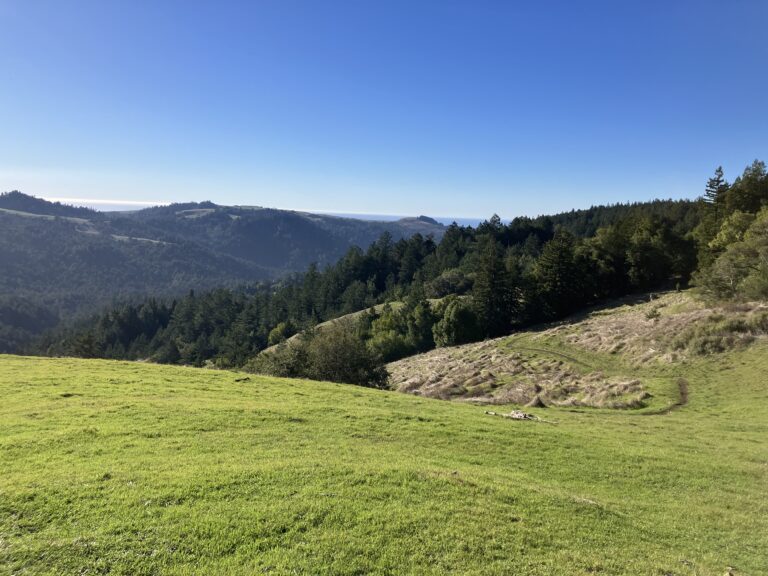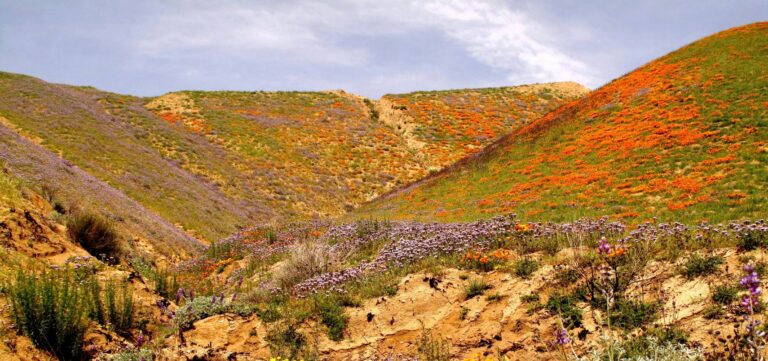National Monument Designations Advance State Goal to Conserve 30 Percent of Lands and Coastal Waters by 2030
SACRAMENTO, CA — The Power In Nature Coalition is celebrating President Biden’s designation of Chuckwalla National Monument in the California desert and Sáttítla Highlands National Monument in Northern California.
The new designations honor Tribal requests, help boost local economies, ensure access to nature, and mark a leap forward in the State of California’s goal of protecting 30 percent of lands and coastal waters by 2030 (30×30).
At the celebratory signing ceremony in the White House’s East Room, President Biden called the permanent protection of places like Chuckwalla and Sáttítla “a birthright we pass down to future generations” and credited Tribal members, local champions, and supporters. “None of this would have happened without you,” he said. “You stepped up. You made the case.”
In Northern California, the new Sáttítla Highlands National Monument is a culturally significant, geologically unique, and life-sustaining region nestled 30 miles from Mount Shasta in northeastern California. More than 224,000 acres of public lands will now be protected by national monument designation.
“For generations, my people have fought to protect Sáttítla, and today we celebrate the voices of our Ancestors being heard,” said Yatch Bamford, Chairman of the Pit River Nation in the campaign’s press release. “Sáttítla Highlands National Monument is a victory not just for Tribal Nations but for every American who understands the value of clean water, healthy lands, and preserving the true history of these United States of America. These designations demonstrate what is possible when we center Indigenous leadership and honor the deep connections between Tribes and their homelands.”
The new Chuckwalla National Monument reaches from the Coachella Valley in the west to near the Colorado River in the east and will protect approximately 624,000 acres of public lands located south of Joshua Tree National Park.
Home to dozens of species that are threatened, endangered, sensitive, or otherwise of concern, the Chuckwalla National Monument is critical for the survival of native species in the face of climate change-related habitat loss, warming temperatures, and increased drought. Unique native plant species found nowhere else in the world have been identified within the monument, including the Mecca aster, Orocopia sage, Munz’s cholla, and others. These lands are also critical for the region’s namesake, the chuckwalla lizard, as well as desert tortoise, and desert bighorn sheep.
“This new national monument offers a beacon of hope for the future stability of one of North America’s strongholds of biodiversity. At this critical juncture, designating Chuckwalla National Monument was a significant step forward in preserving the largest relatively intact ecosystem we have left in the lower 48 states,” said Kelly Herbinson, Executive Director, Mojave Desert Land Trust. “Threatened wildlife and remarkable flora will have a fighting chance of adapting to the changing climate…Crucially, maintaining the integrity of this ecosystem will help us improve the environmental health of all the communities living in this region.”
Desert lands — such as the Chuckwalla National Monument — are scientifically recognized as significant carbon sinks, capturing and storing carbon emissions underground for thousands of years. The California desert region, spanning Riverside and surrounding counties, holds sequestered carbon that has been captured and stored over millennia in undisturbed soils. Permanently protecting desert lands from development and other disturbances can help address climate change by ensuring these carbon reserves remain in the ground and out of the atmosphere.
Sáttítla Highlands National Monument is also crucial for the health of millions of people, wildlife, and plants. Serving as one of California’s headwaters, the aquifers beneath these lands deliver clean, cold water to Fall River and the state’s largest spring system. More water is stored in Sáttítla’s groundwater aquifers than the combined total of California’s 200 largest surface water reservoirs.
In the campaign’s press release, Michelle Berditschevsky, founder of the Mount Shasta Bioregional Ecology Center & Protect Medicine Lake Highlands Program Director noted the decades-long work between thePit River Nation, the Native Coalition for Medicine Highlands Defense, and Stanford Law Clinic to protect Sáttítla’s remarkable natural resources. “But it’s more than that,” she said “In a time of climate change and loss of biodiversity, Sáttítla is especially important as sacred land that revitalizes the Indigenous Native American cultural worldview, a world view that understands the interrelatedness of all life—’all our relations’—and the importance of living in harmony and balance with nature.”
The underground volcanic aquifers at Sáttítla, which feed the Fall River spring system, provide a buffer from climate change and the increasing drought by ensuring water for millions of Californians and agricultural needs downstream.
30×30 is an initiative to protect both nature and human communities from the worst effects of climate change, with on-the-ground campaigns and conservation projects statewide to help reach this goal. This is part of a larger global movement to support nature-based solutions to help mitigate the climate and extinction crises.
“We join many across the state in celebration of California’s newest monuments: Chuckwalla National Monument and Sáttítla Highlands National Monument,” said Dr. Jun Bando, Executive Director of the California Native Plant Society. “Protection of these lands will help conserve biodiversity in the face of climate change while advancing California’s goal of reaching 30×30. These designations are significant steps towards the permanent preservation of beautiful and botanically rich landscapes across California.”
In 2020, Governor Newsom committed California to the 30×30 goal, and in 2023, that goal became state law. California is making strong progress towards 30×30, but millions more acres still must be conserved in less than five years to reach the goal.
# # #
About the Power In Nature Coalition
Power In Nature is a statewide coalition of community groups, environmental and conservation organizations, land trusts, Indigenous organizations, and Tribal members dedicated to advancing California’s 30×30 commitment. The Power In Nature coalition has identified nearly 100 potential 30×30 projects across the state and works on a broad range of issues including biodiversity protection, climate resilience, equity, recreation, outdoor access, and social justice. For more information visit PowerInNature.org.



